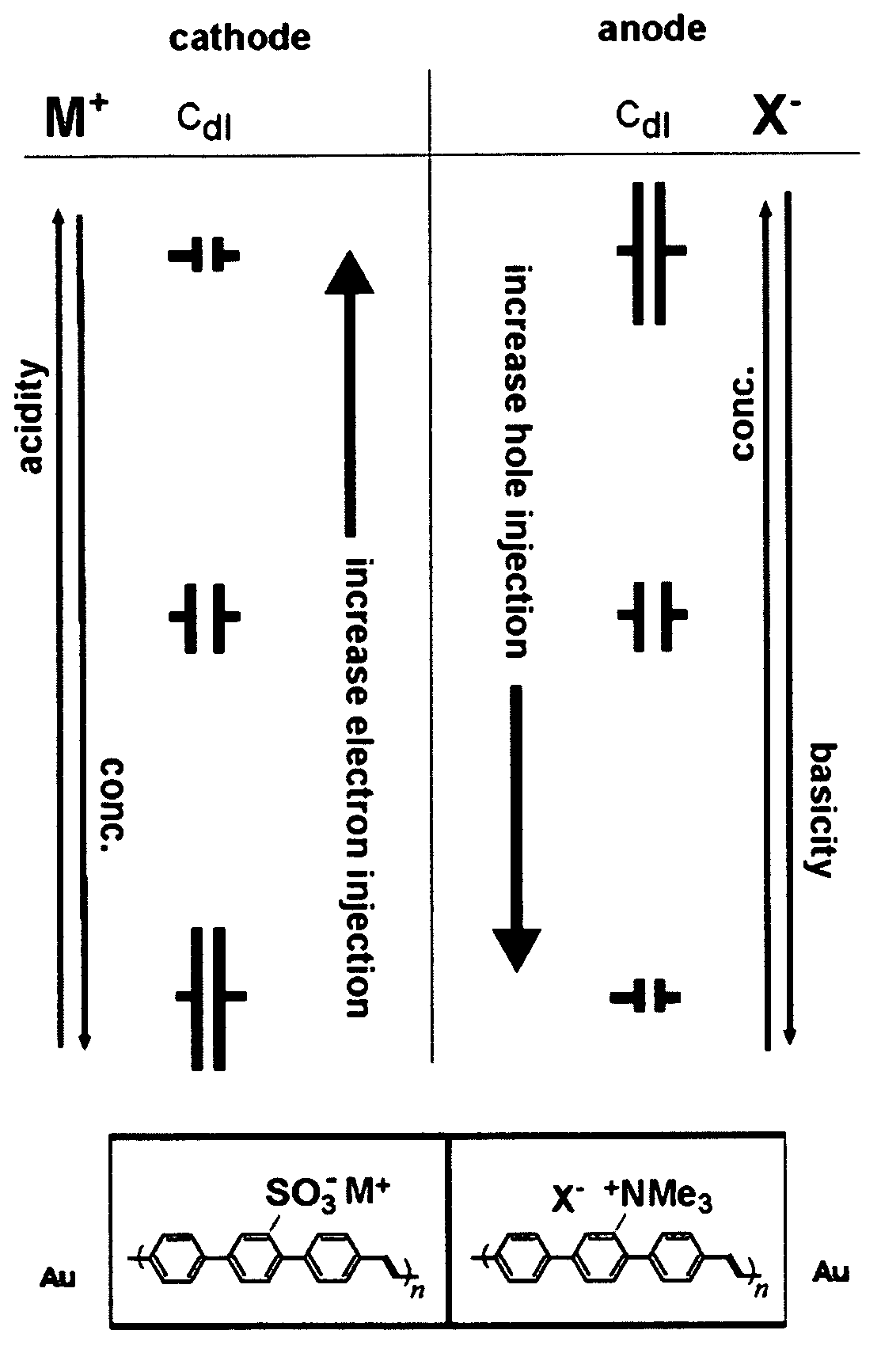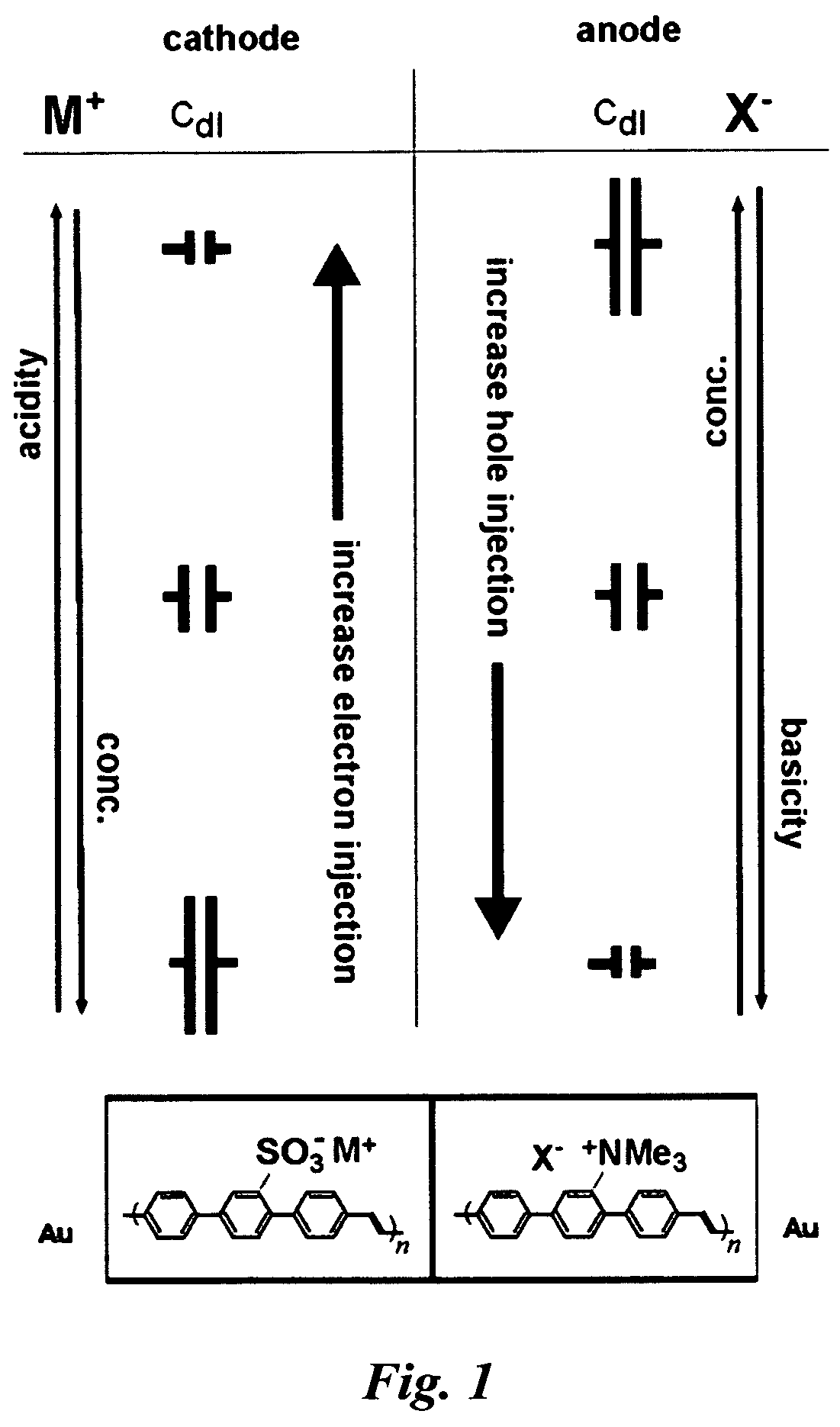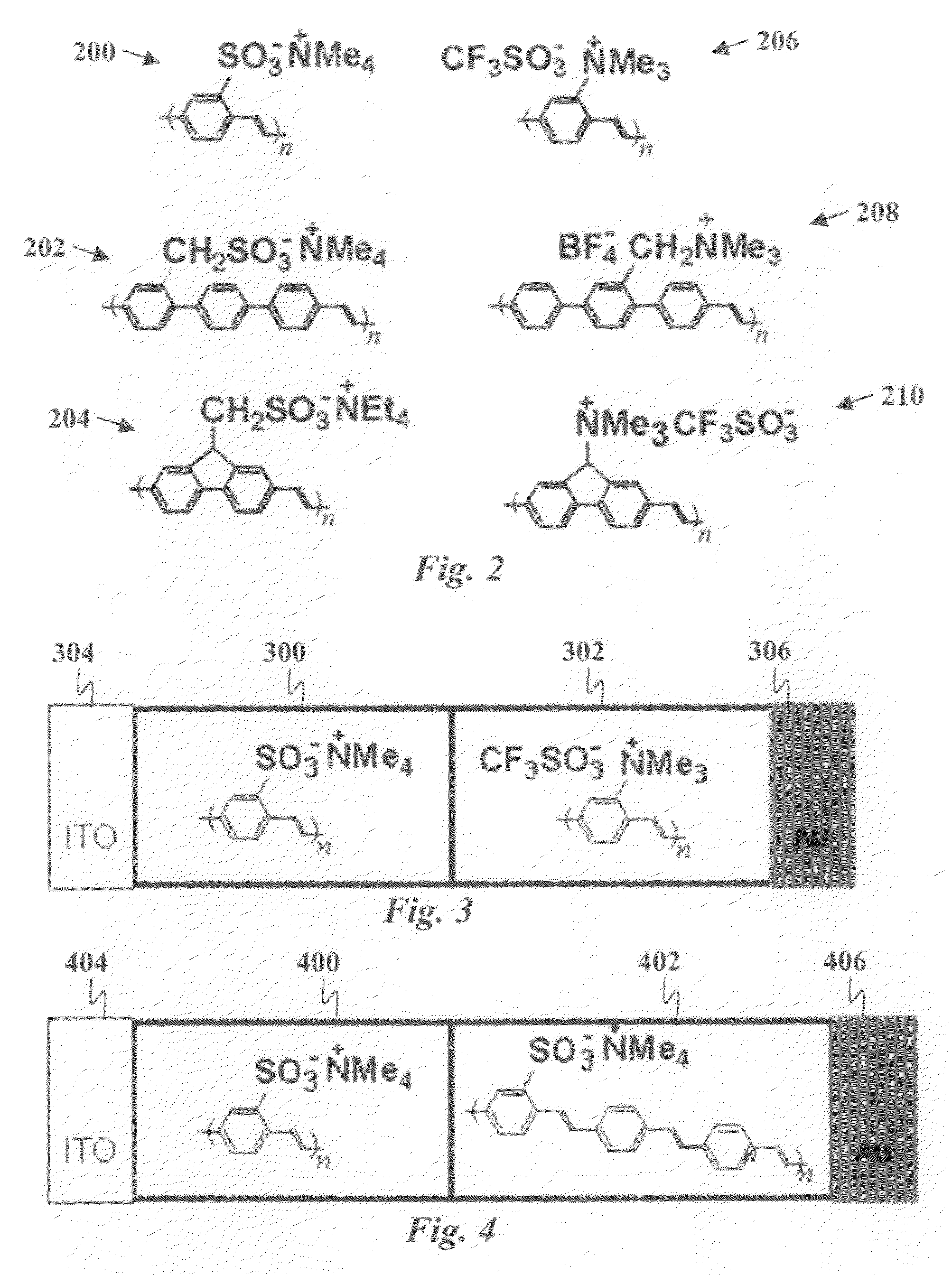Heteroionic junction light emitting electrochemical cell
a technology of electrochemical cells and heteroionic junctions, applied in the direction of discharge tubes/lamp details, discharge tubes luminescnet screens, conductors, etc., can solve the problems of inconvenient materials, material inability to meet the needs of use, etc., to achieve optimal light emission efficiency
- Summary
- Abstract
- Description
- Claims
- Application Information
AI Technical Summary
Benefits of technology
Problems solved by technology
Method used
Image
Examples
Embodiment Construction
[0022]Embodiments of the present invention are based on a two-layer heteroionic structure designed using principles of double layer capacitance engineering to control of the ion content in the active layers so as to balance electron and hole injection, thereby increasing the efficiency of the device. The concept of double layer capacitance engineering (CdlE) relies on the unique properties of mixed ionic / electronic conductors (MIECs) interfaced to ion blocking electrodes. The capacitance per unit area (Cdl) due to the polarization of ions at a blocking electrode is given, in the zero bias Guoy-Chapman limit, by:
[0023]Cdl=2z2e2ɛnkBT(1)
where e is the elementary charge, ze is the magnitude of the charge on the ions, n is the free ion concentration, ∈ is the dielectric constant, kB is the Boltzmann constant, and T is the temperature. It is important to note that, in general, Cdl does depend on applied bias.
[0024]The most important aspect of eq. (1) is that Cdl can be tailored thro...
PUM
 Login to View More
Login to View More Abstract
Description
Claims
Application Information
 Login to View More
Login to View More - R&D
- Intellectual Property
- Life Sciences
- Materials
- Tech Scout
- Unparalleled Data Quality
- Higher Quality Content
- 60% Fewer Hallucinations
Browse by: Latest US Patents, China's latest patents, Technical Efficacy Thesaurus, Application Domain, Technology Topic, Popular Technical Reports.
© 2025 PatSnap. All rights reserved.Legal|Privacy policy|Modern Slavery Act Transparency Statement|Sitemap|About US| Contact US: help@patsnap.com



